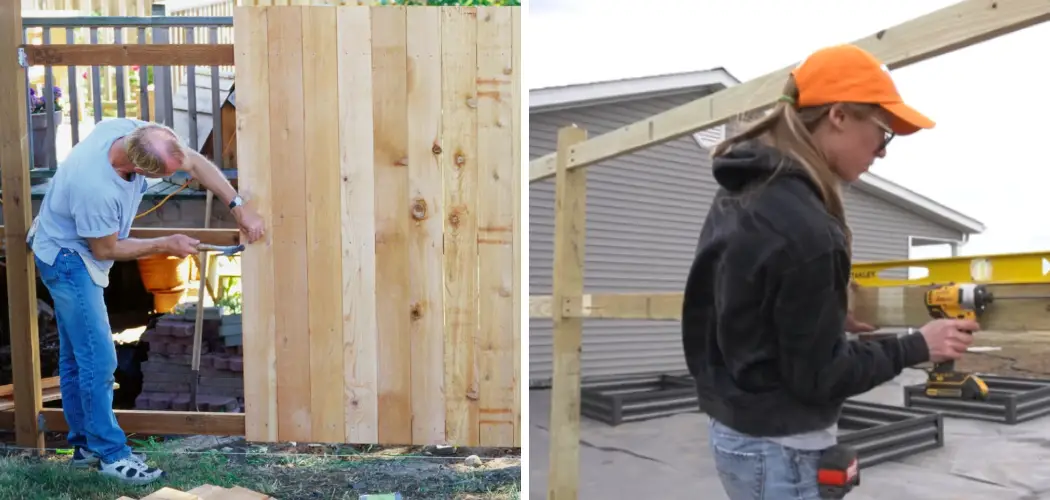Calculating a board on board fence is a crucial step in planning your fencing project. This type of fence provides not only privacy and security but also adds aesthetic appeal to your property. The unique design of overlapping boards ensures there are no gaps between them, which blocks the view into your yard effectively, even as the wood naturally expands and contracts.
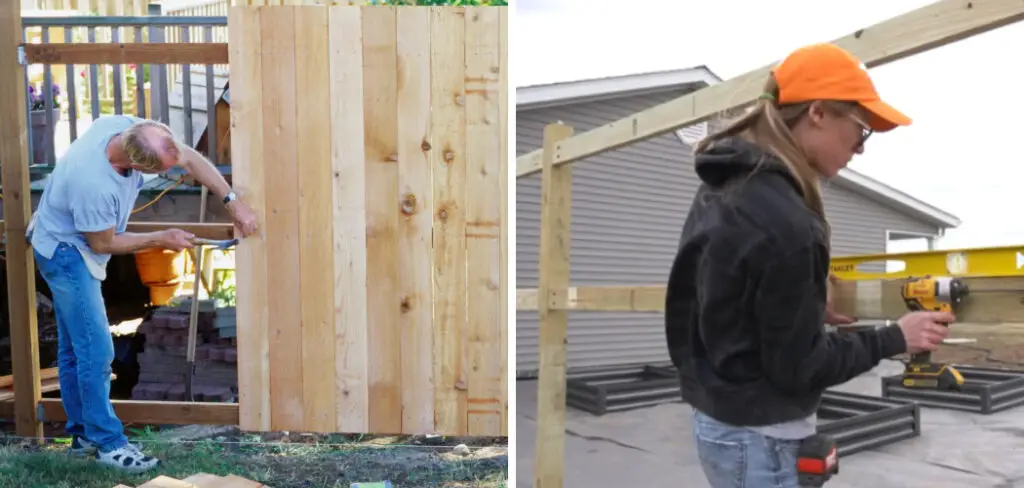
In this guide on how to calculate board on board fence, we will walk you through the essentials of calculating the materials and measurements needed to construct a board on board fence, enabling you to estimate the cost accurately and prepare effectively for your fencing project.
What is a Board-on-Board Fence?
A board-on-board fence is a type of wood fencing where the boards are placed horizontally and overlapping each other. The top and bottom boards are typically wider than the middle ones, creating an alternating pattern. This design provides complete privacy while adding visual interest to your property.
You can use different types of wood for a board-on-board fence, such as cedar, redwood, or pine. Each type has its unique characteristics and price point, so make sure to research and choose the best option for your budget and needs.
It is also essential to note that a board-on-board fence can be built with either vertical or horizontal boards. The difference in the installation method will affect the spacing between the posts and the overall aesthetic of the fence.
Why Choose a Board-on-Board Fence?
There are several reasons why you may want to choose a board-on-board fence for your property. Here are some of the advantages of this type of fencing:
Privacy:
As mentioned, a board-on-board fence provides complete privacy by overlapping the boards and leaving no gaps.
Aesthetics:
The alternating pattern of wide and narrow boards creates a unique and visually appealing design for your fence.
Durability:
The overlapping design also makes the fence more durable as it allows the wood to naturally expand and contract without creating gaps.
Versatility:
A board on board fence can be built with different types of wood and in both vertical and horizontal orientations, making it suitable for various needs and preferences.
Materials Needed
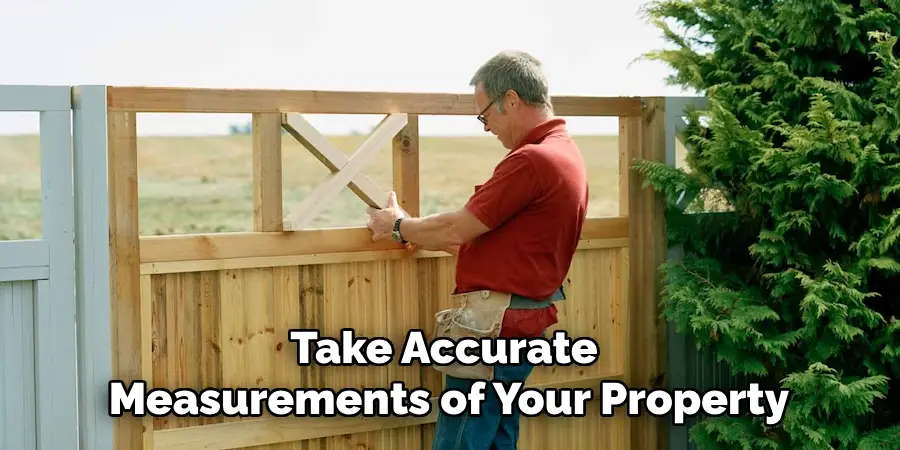
To calculate the materials needed for a board-on-board fence, you will need to take accurate measurements of your property and determine its layout. Here are the materials you will need:
Fence Posts:
These will be placed at each corner, end, and junction point of your fence. The number of posts needed will depend on the length and layout of your fence.
Boards:
You will need enough boards to cover the entire length of your fence, including any gates or openings. Keep in mind that you may need to cut the boards to fit around any obstacles or uneven areas.
Rails:
Rails are horizontal boards that connect the posts and provide support for the fence. You will need two rails per section of fence, with additional ones needed for gates or longer sections.
Fasteners:
These can include nails, screws, or brackets to secure the boards and rails in place.
11 Step-by-step Guidelines on How to Calculate Board on Board Fence
Step 1: Measure the Length
Start by measuring the length of your fence line. This will help you calculate how many boards, rails, and posts you will need. It is essential to measure accurately, as even a small error can affect the overall cost and materials needed for your project. But don’t worry; you can always double-check your measurements later. The length of your fence will also determine the number of posts needed.
Step 2: Determine the Layout
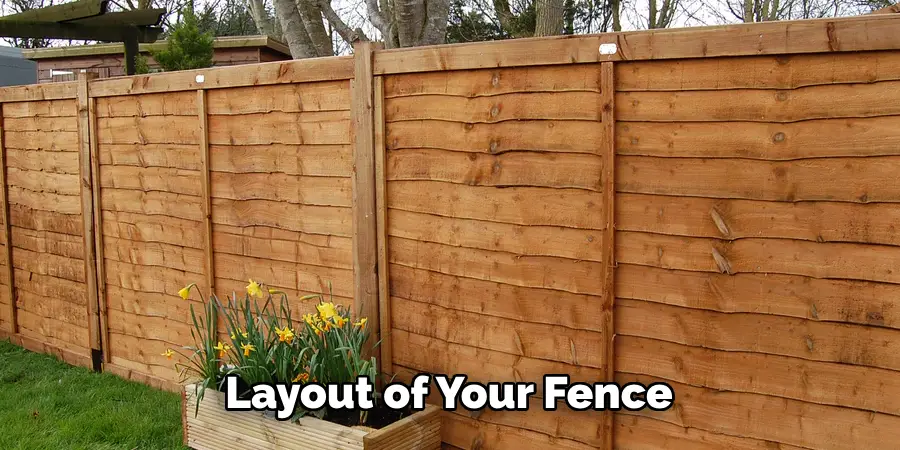
Next, you need to decide on the layout of your fence. Will it be a straight line or have corners and angles? This will help you determine the number of posts needed and their placement along with the fence line. You may want to use stakes and string to mark the layout before proceeding. If your fence has corners or angles, make sure to measure each section separately.
Step 3: Calculate the Number of Posts
Based on your measurements and layout, calculate the number of posts needed. Typically, a post is placed every eight feet along the fence line, but this can vary depending on the size and weight of your chosen boards. You may need additional posts for gates or corners. The posts should be around two feet longer than the height of your fence to ensure stability. But if you’re using pre-cut posts, make sure to adjust your measurements accordingly.
Step 4: Determine the Number of Boards
To calculate the number of boards needed, you will need to know the width of each board. Typically, a board-on-board fence will have wider top and bottom boards than middle ones, but this can vary based on your design preferences. Multiply the width of each board by the total length of the fence to determine the number needed. Remember to account for any gates or openings that may require additional boards.
Step 5: Calculate the Number of Rails
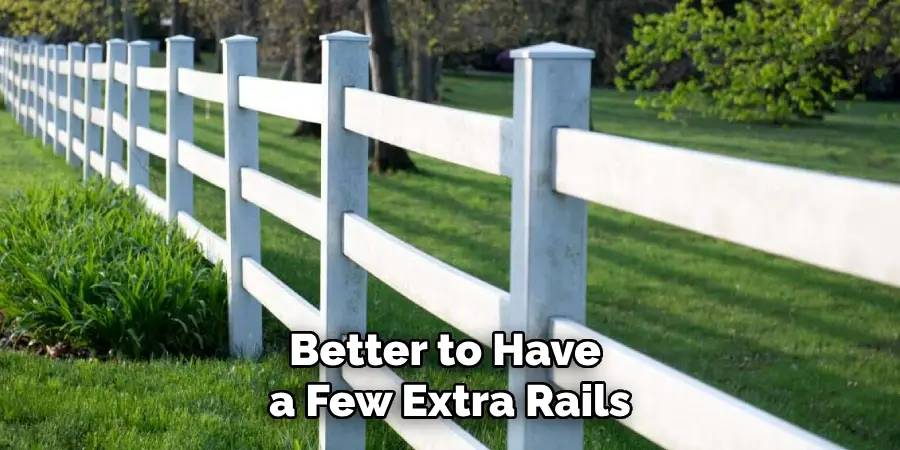
Next, you need to calculate the number of rails needed. Typically, two rails are used per section of fence, with additional ones required for gates or longer sections. Measure the width of your chosen rails and multiply it by the total length of your fence to determine the number needed.
You may also need to adjust your measurements based on the layout and layout of your fence. It’s always better to have a few extra rails than not enough. You can always return unused ones or keep them for future repairs.
Step 6: Calculate the Fasteners Needed
Based on the number of boards and rails calculated, determine how many fasteners you will need. It is recommended to use at least two fasteners per board, evenly spaced along the rail. You may also need additional fasteners for gates or other sections where boards may overlap.
But be sure to check the instructions of your chosen fasteners for specific installation guidelines. It is also essential to choose high-quality and weather-resistant fasteners for longevity. You don’t want your fence falling apart due to rust or rotting.
Step 7: Account for Any Obstacles
If your fence will be installed around any obstacles, such as trees or rocks, you may need to adjust the number of boards and rails needed. In some cases, you may need to cut the boards to fit around these obstacles, so it’s best to measure and calculate accordingly. You may also want to add an extra board or rail for stability if the obstacle is located at a corner or angle of your fence.
Step 8: Calculate Gate Materials
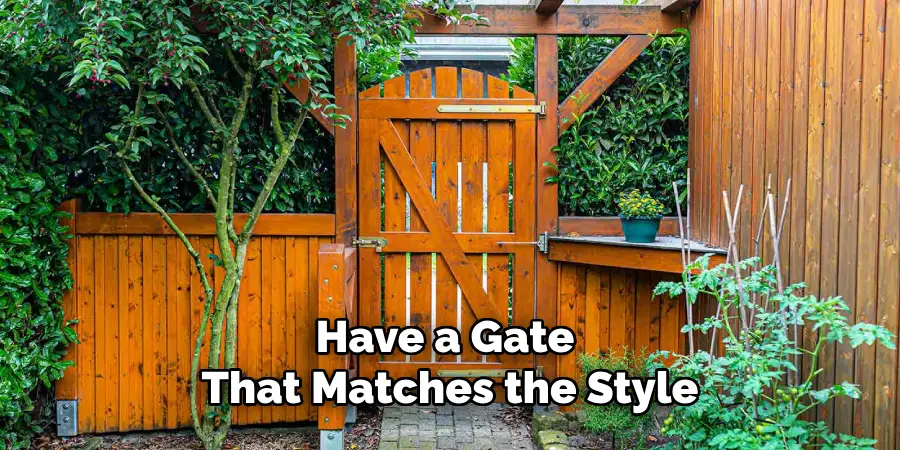
If you plan on installing a gate, you will need to calculate the materials needed separately. Measure the width and height of your chosen gate and determine how many boards, rails, and fasteners will be required. You may also need additional materials, such as hinges and latches, which should be included in your overall calculation. It is recommended to have a gate that matches the style and design of your fence for a cohesive look.
Step 9: Determine the Cost
Once you have calculated all the materials needed, it’s time to determine the cost. Make sure to factor in the cost of each material, including any delivery fees or taxes. You may also want to add a buffer amount for unexpected expenses or additional materials needed during the installation process. It’s always better to overestimate and have some extra materials rather than not having enough and delaying the project.
Step 10: Double-Check Measurements
Before making any purchases or beginning the installation process, it’s essential to double-check all your measurements. Make sure they are accurate and consistent throughout your calculations. You may also want to get a second opinion from a friend or family member to ensure accuracy. Making mistakes in measurements can lead to costly and time-consuming delays, so it’s better to be safe than sorry.
Step 11: Prepare for Installation
After completing all the calculations and double-checking your measurements, you are now ready to purchase the materials and begin the installation process. Remember to follow the manufacturer’s instructions for proper installation and use all necessary safety precautions. With careful planning and accurate calculations, you can successfully build a beautiful board-on-board fence that will enhance your property’s aesthetics and provide privacy and security for years to come.
Happy fencing!
Following these steps on how to calculate board-on-board fence will ensure a smooth and successful installation process for your board-on-board fence. It’s always important to plan ahead and make accurate calculations to avoid any setbacks or delays.
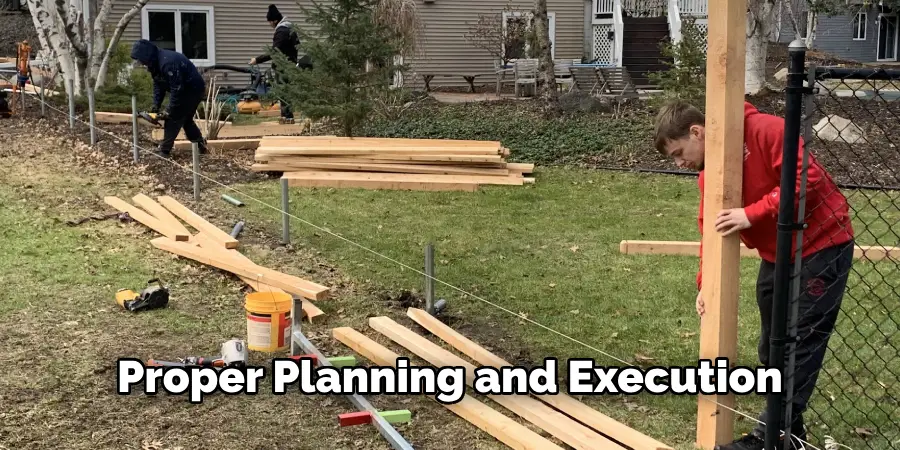
Additionally, don’t forget to consider the type of wood you will use for your fence, as different types may require different treatment and maintenance methods. With proper planning and execution, your new board-on-board fence will be a beautiful addition to your property and will provide added value for years to come.
Purchasing Materials and Budgeting
Armed with a comprehensive list of materials needed for your board-on-board fence, the next critical step is purchasing the materials and effectively managing your budget. Begin by sourcing your materials from reliable suppliers offering quality and value.
Comparing prices among different vendors can save costs without compromising on the quality of materials. It’s crucial to consider not only the initial purchase price but also the long-term durability and maintenance costs associated with your chosen materials.
When budgeting, allocate funds not just for the materials but also for any tools or equipment you might need to rent or purchase, delivery fees, and a contingency fund for unforeseen expenses. This proactive approach ensures you are prepared for any scenario that may arise during the installation process. By carefully selecting materials and managing your budget, you can ensure a cost-effective and successful board-on-board fence installation.
Adjusting for Variations in Fence Design: Alternatives to Board on Board Fence
While board-on-board fences are a popular and durable choice, there are alternative fence designs you may want to consider. These include:
Shadow Box Fence:
Similar to a board on board fence, but with alternating boards on either side of the rails for added privacy.
Picket Fence:
A traditional option made from evenly spaced vertical pickets attached to horizontal rails.
Lattice Fence:
Featuring criss-crossed panels made from wood or vinyl, providing partial privacy while still allowing light and air to pass through.
Iron or Aluminum Fence:
A durable option available in various styles and heights, offering both security and curb appeal.
No matter which design you choose, the calculation steps outlined above can be applied to determine the materials needed and budget for your specific project. It’s essential to thoroughly research and consider all options to ensure you make the best decision for your property.

Real-Life Examples and Demonstrations
To further aid in your understanding of how to calculate and plan for a board on board fence, let’s look at some real-life examples and demonstrations.
Example 1: Calculating Materials Needed
Let’s say you want to build a 50-foot long board-on-board fence that is 6 feet high. Based on the standard spacing of boards at 6 inches apart, you will need 100 boards (50 feet x 12 inches/6 inches). Using the formula from Step 2, we determine that you will also need 25 rails (100 boards / 4). For fasteners, we can estimate using the recommended two fasteners per board. So, a total of 200 fasteners will be needed for this project.
Example 2: Adjusting for Obstacles
If your fence is installed around a tree that is located in the middle of your fence line, you may need to adjust the number of boards and rails needed. In this case, you may need to cut some boards to fit around the tree, so it’s best to measure and calculate accordingly. You may also want to add an extra board and rail for stability, as the tree may affect the overall integrity of your fence.
Example 3: Calculating Gate Materials
If you plan on including a gate in your board-on-board fence, you will need to calculate the materials separately. Let’s say you have chosen a 4-foot wide and 6-foot high gate. Following the same formula from Step 2, you will need 8 boards (4 feet x 12 inches/6 inches) and 2 rails (8 boards / 4). You may also need hinges and a latch for your gate, which should be included in your overall calculation.
Frequently Asked Questions
Q: Can I Use Pre-assembled Panels for a Board-on-Board Fence?
A: Yes, you can use pre-assembled panels for your board on board fence. However, it’s essential to factor in the panel size and adjust your calculations accordingly. Also, make sure to follow the manufacturer’s instructions for proper installation. It’s recommended to use panels with thicker boards for added durability and stability.
Q: How Long Will a Board on Board Fence Last?
A: The lifespan of a board-on-board fence depends on various factors, such as the type of wood used, weather conditions, and maintenance. With proper care and maintenance, a well-built board-on-board fence can last for 20 years or more. It’s essential to regularly inspect and repair any damages or wear and tear to extend the lifespan of your fence.
Q: Can I Install a Board-on-Board Fence Myself?
A: While it’s possible to install a board-on-board fence by yourself, it may be challenging for someone with little experience in fencing projects. It’s recommended to seek assistance from a professional or have a friend or family member help you during the installation process for safety and efficiency purposes.
Q: Can I Build a Board-on-Board Fence on Uneven Ground?

A: Yes, a board-on-board fence can be built on uneven ground. However, additional preparation and adjustments may be required to ensure the fence is level and stable. It’s recommended to consult with a professional for the best approach in these situations. You may also need to use longer posts or add extra bracing for added stability.
Conclusion
In conclusion on how to calculate board on board fence, building a board-on-board fence requires careful planning, accurate measurements, and thoughtful selection of materials. By following the outlined steps, from calculating the materials needed to budgeting and purchasing, you can ensure a smooth and successful installation process.
Real-life examples and demonstrations provide practical insights into the necessary adjustments and considerations for a resilient and aesthetically pleasing board-on-board fence.
With the right preparation and execution, your new fence will not only enhance the privacy and security of your property but also contribute to its overall aesthetic appeal. Remember, meticulous planning leads to flawless execution, resulting in a durable and attractive board-on-board fence that you can be proud of for years to come.
About
Outdoor Fixes is a distinguished figure in the world of Diy design, with a decade of expertise creating innovative and sustainable Diy solutions.
His professional focus lies in merging traditional craftsmanship with modern manufacturing techniques,
fostering designs that are both practical and environmentally conscious. As the author of diy,
outdoorfixes delves into the art and science of outdoorfixes-making, inspiring artisans and industry professionals alike.
Education RMIT University
(Melbourne, Australia) Associate Degree in Design (Outdoor Fixes) Focus on sustainable design, industry-driven projects,
and practical craftsmanship. Gained hands-on experience with traditional and digital manufacturing tools, such as CAD and CNC software.
Nottingham Trent University
(United Kingdom) Bachelor’s in outdoorfixes.com and Product Design (Honors) Specialized in product design with a focus on blending creativity with production
techniques. Participated in industry projects, working with companies like John Lewis and Vitsoe to gain real-world insights.
Publications and Impact
In diy, Outdoor Fixes his insights on indoor design processes, materials, and strategies for efficient production.
His writing bridges the gap between artisan knowledge and modern industry needs, making it a must-read for both budding designers and seasoned professionals.

